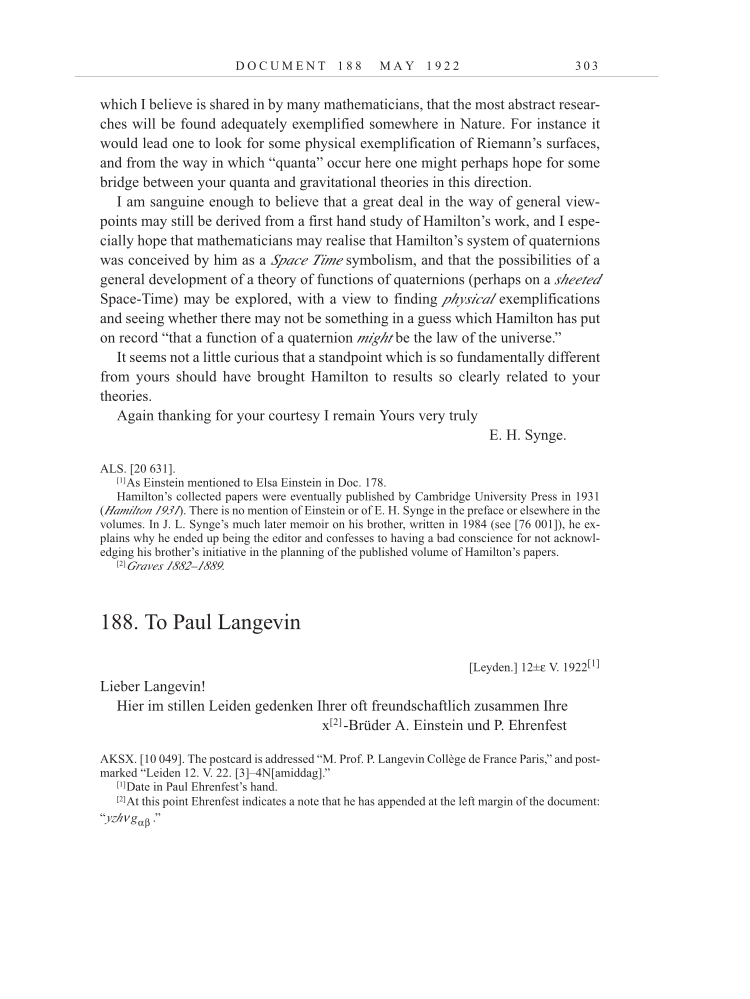D O C U M E N T 1 8 8 M A Y 1 9 2 2 3 0 3 which I believe is shared in by many mathematicians, that the most abstract resear- ches will be found adequately exemplified somewhere in Nature. For instance it would lead one to look for some physical exemplification of Riemann’s surfaces, and from the way in which “quanta” occur here one might perhaps hope for some bridge between your quanta and gravitational theories in this direction. I am sanguine enough to believe that a great deal in the way of general view- points may still be derived from a first hand study of Hamilton’s work, and I espe- cially hope that mathematicians may realise that Hamilton’s system of quaternions was conceived by him as a Space Time symbolism, and that the possibilities of a general development of a theory of functions of quaternions (perhaps on a sheeted Space-Time) may be explored, with a view to finding physical exemplifications and seeing whether there may not be something in a guess which Hamilton has put on record “that a function of a quaternion might be the law of the universe.” It seems not a little curious that a standpoint which is so fundamentally different from yours should have brought Hamilton to results so clearly related to your theories. Again thanking for your courtesy I remain Yours very truly E. H. Synge. ALS. [20 631]. [1]As Einstein mentioned to Elsa Einstein in Doc. 178. Hamilton’s collected papers were eventually published by Cambridge University Press in 1931 (Hamilton 1931). There is no mention of Einstein or of E. H. Synge in the preface or elsewhere in the volumes. In J. L. Synge’s much later memoir on his brother, written in 1984 (see [76 001]), he ex- plains why he ended up being the editor and confesses to having a bad conscience for not acknowl- edging his brother’s initiative in the planning of the published volume of Hamilton’s papers. [2]Graves 1882–1889. 188. To Paul Langevin [Leyden.] 12±ε V. 1922[1] Lieber Langevin! Hier im stillen Leiden gedenken Ihrer oft freundschaftlich zusammen Ihre x[2] -Brüder A. Einstein und P. Ehrenfest AKSX. [10 049]. The postcard is addressed “M. Prof. P. Langevin Collège de France Paris,” and post- marked “Leiden 12. V. 22. [3]–4N[amiddag].” [1]Date in Paul Ehrenfest’s hand. [2]At this point Ehrenfest indicates a note that he has appended at the left margin of the document: “yzhν .” gαβ
